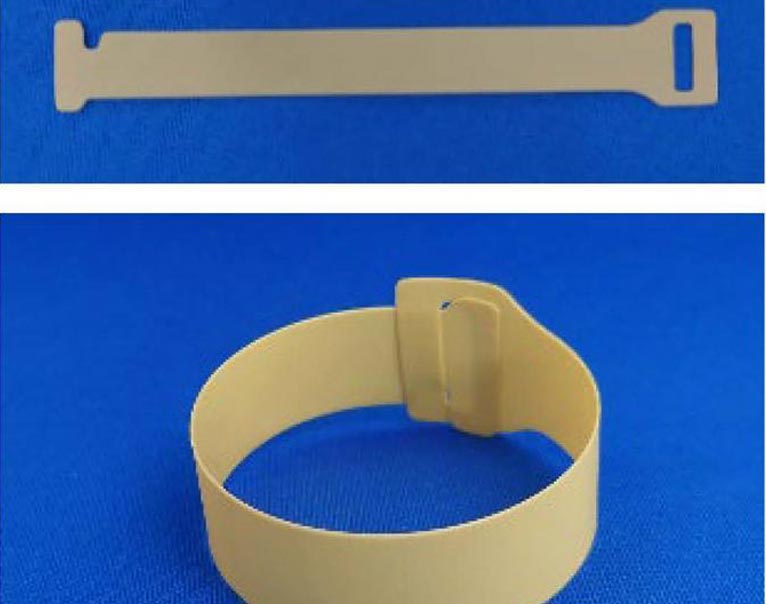
Plastic Device Enhances Robot-Assisted Heart Surgery Efficacy

This polyether ether ketone plate has a thickness of 0.4 mm and can be fastened into a circular shape for use in robot-assisted heart surgery.
Credit: Osaka Metropolitan University
Surgical field expansion plate allows surgeons more independence.
Robot-assisted heart surgery usually requires an assistant at the operating table to help the surgeon insert the robot arm through a small incision. The assistant has to constantly make sure the surgeon has enough room to operate via the robot arm. For greater independence on the surgeon’s side, an Osaka Metropolitan University-led group has developed a device that can secure the surgical field.
Graduate School of Medicine Professor Toshihiko Shibata and Associate Professor Yosuke Takahashi worked with colleagues and small and medium-sized enterprises to develop the surgical field expansion plate made from a type of plastic used for medical implants and the aerospace industry. They tested the device during actual heart surgery.
When the polyether ether ketone plate is fastened into a circular shape, it expands to a certain size and retains its shape, securing the surgical field. The plate is 0.4 millimeters thick with varying widths and lengths available depending on the requirements of the surgery.
“This flexible yet rigid medical-grade device is simple to use and reusable,” Professor Takahashi stated. “This plate is expected to make it possible to perform robot-assisted heart surgery that is not dependent on the skill of the assistant, with further applications expected in fields such as oral surgery and otolaryngology.”
The findings were published in Innovations.
About OMU
Established in Osaka as one of the largest public universities in Japan, Osaka Metropolitan University is committed to shaping the future of society through “Convergence of Knowledge” and the promotion of world-class research. For more research news, visit https://www.omu.ac.jp/en/ and follow us on social media: X, Facebook, Instagram, LinkedIn.
Journal: Innovations Technology and Techniques in Cardiothoracic and Vascular Surgery: DOI 10.1177/15569845241287769
Method of Research: Case study
Subject of Research: People
Article Title: Self-adjusting atrial and subvalvular exposure system for robotic surgery
Article Publication Date: 26-Oct-2024
Media Contact
Yung-Hsiang Kao
Osaka Metropolitan University
koho-ipro@ml.omu.ac.jp
Office: +81-6-6605-3452
@OsakaMetUniv_en















